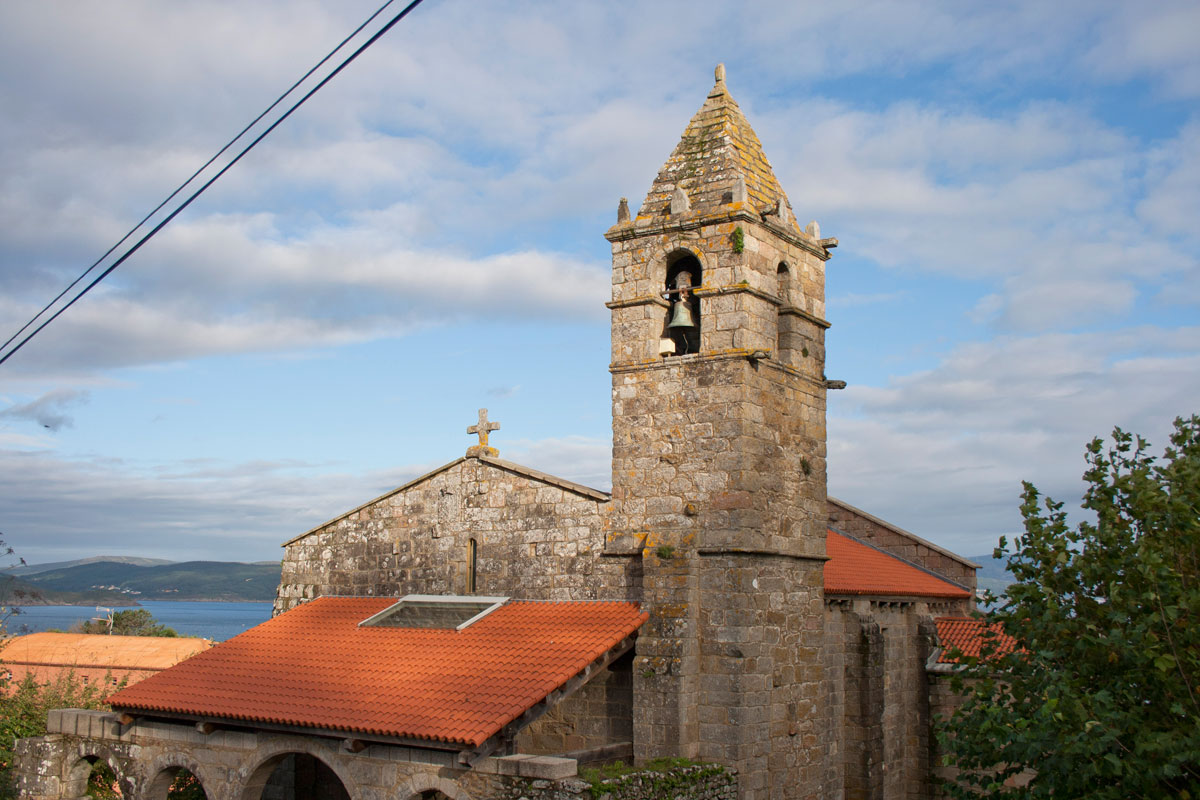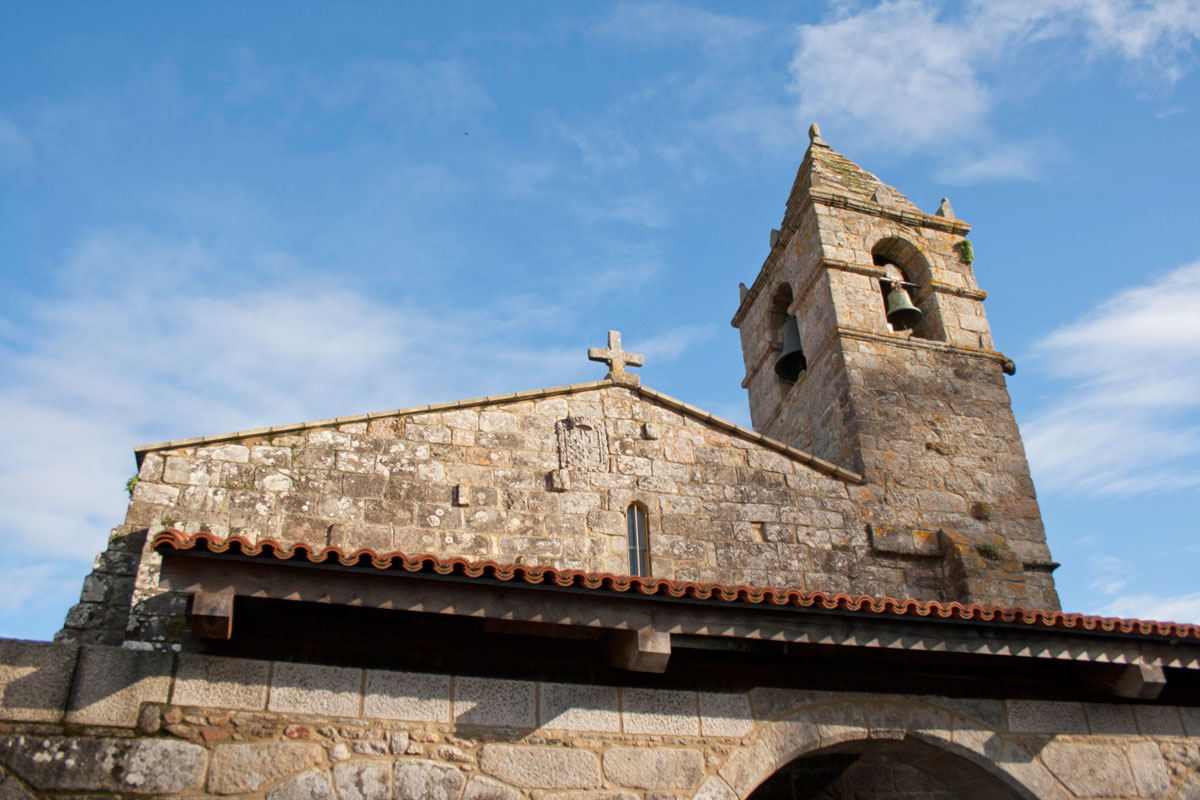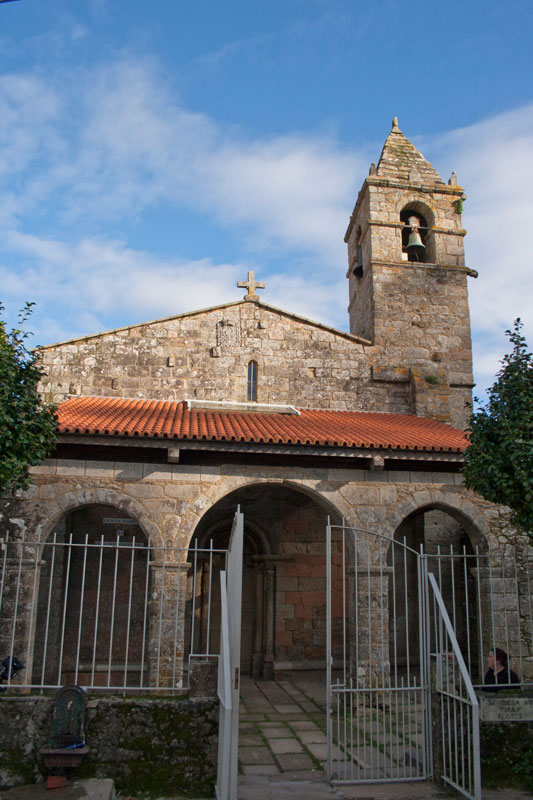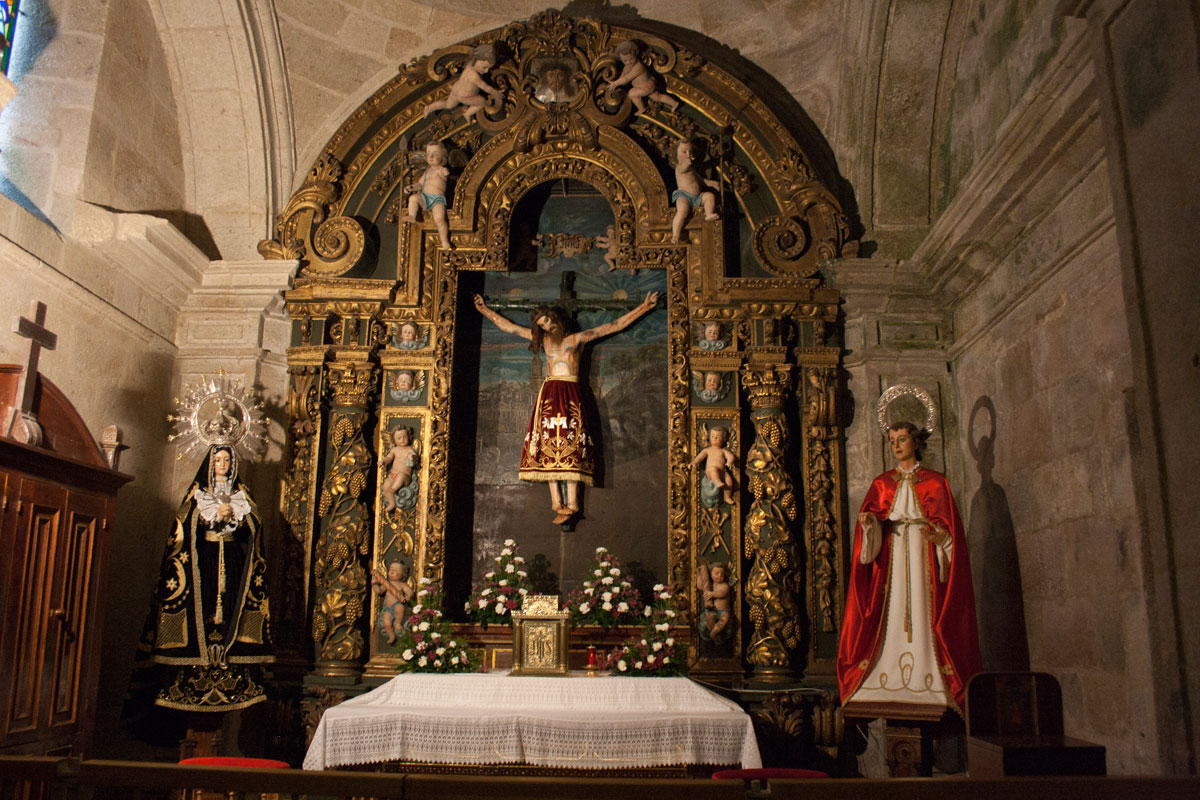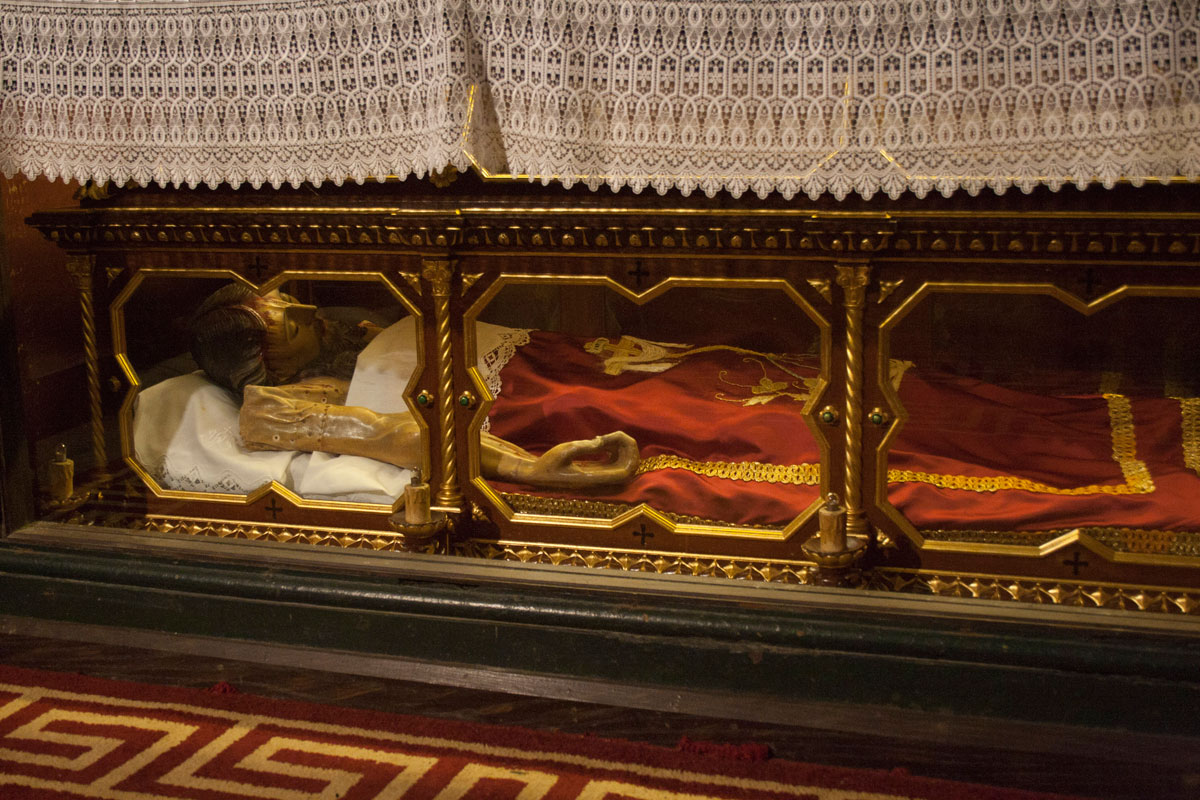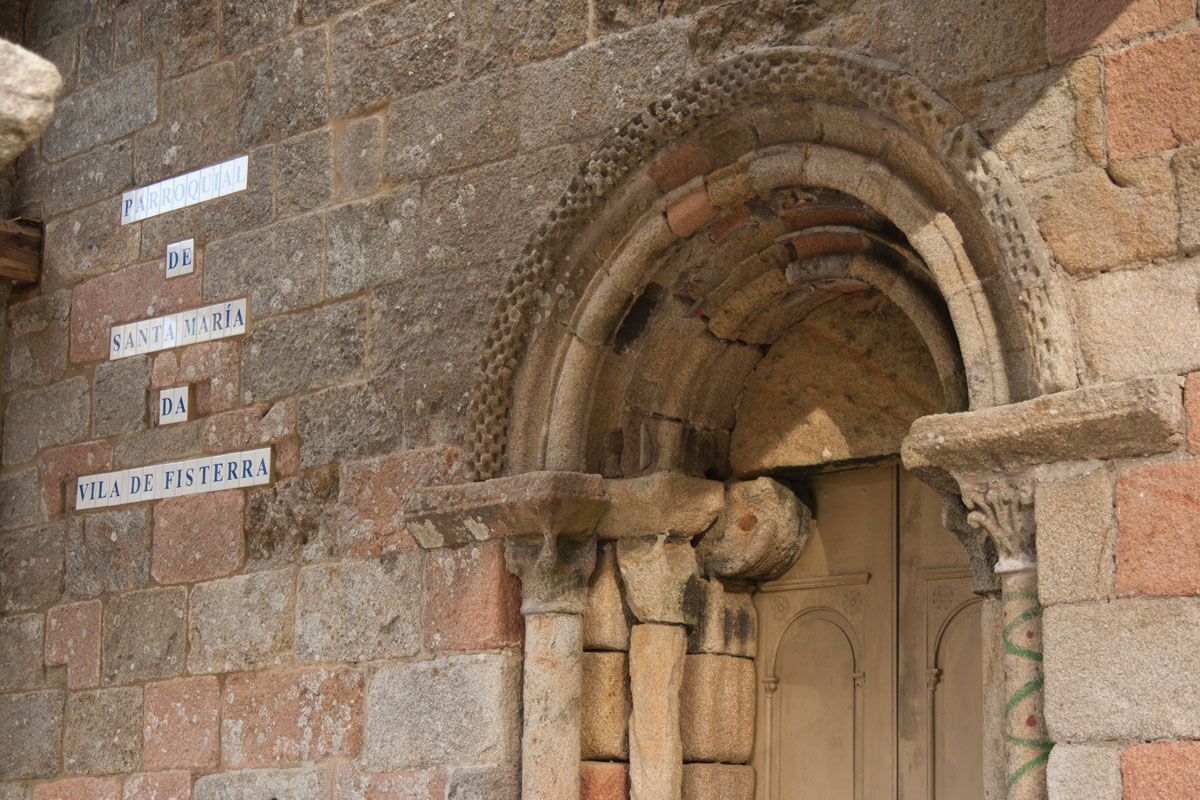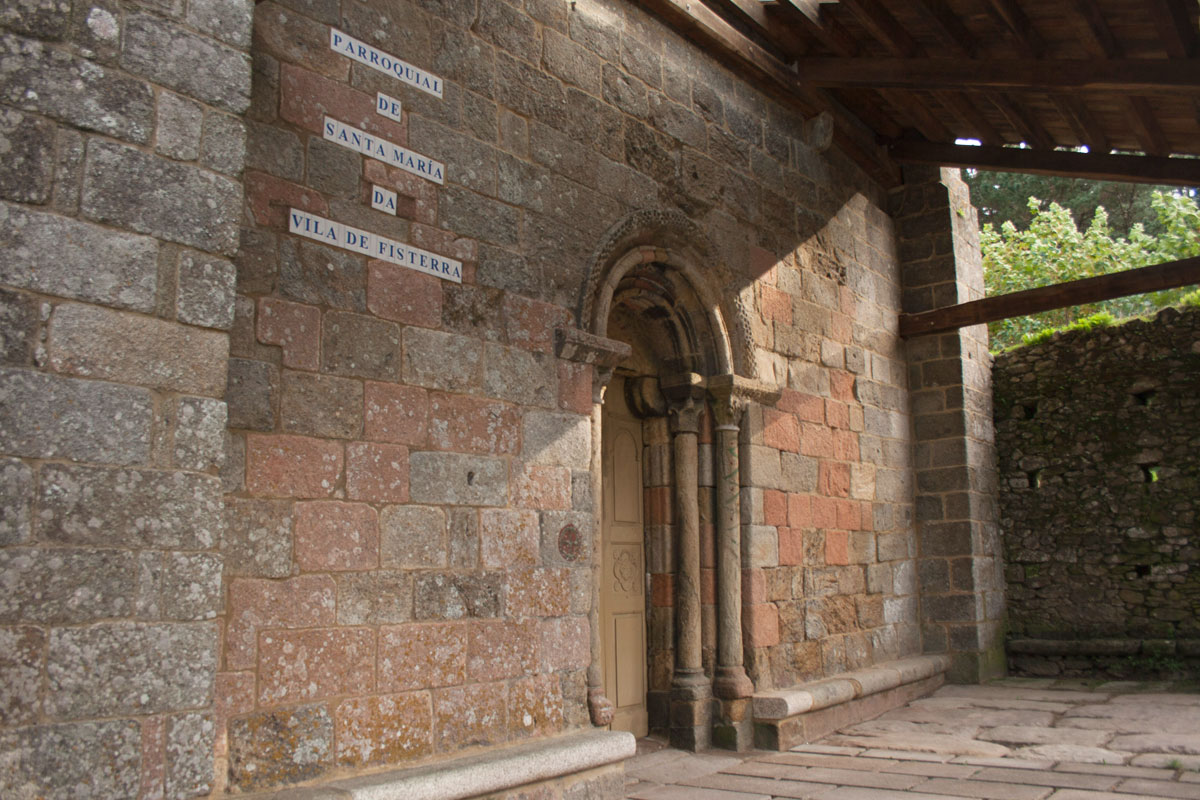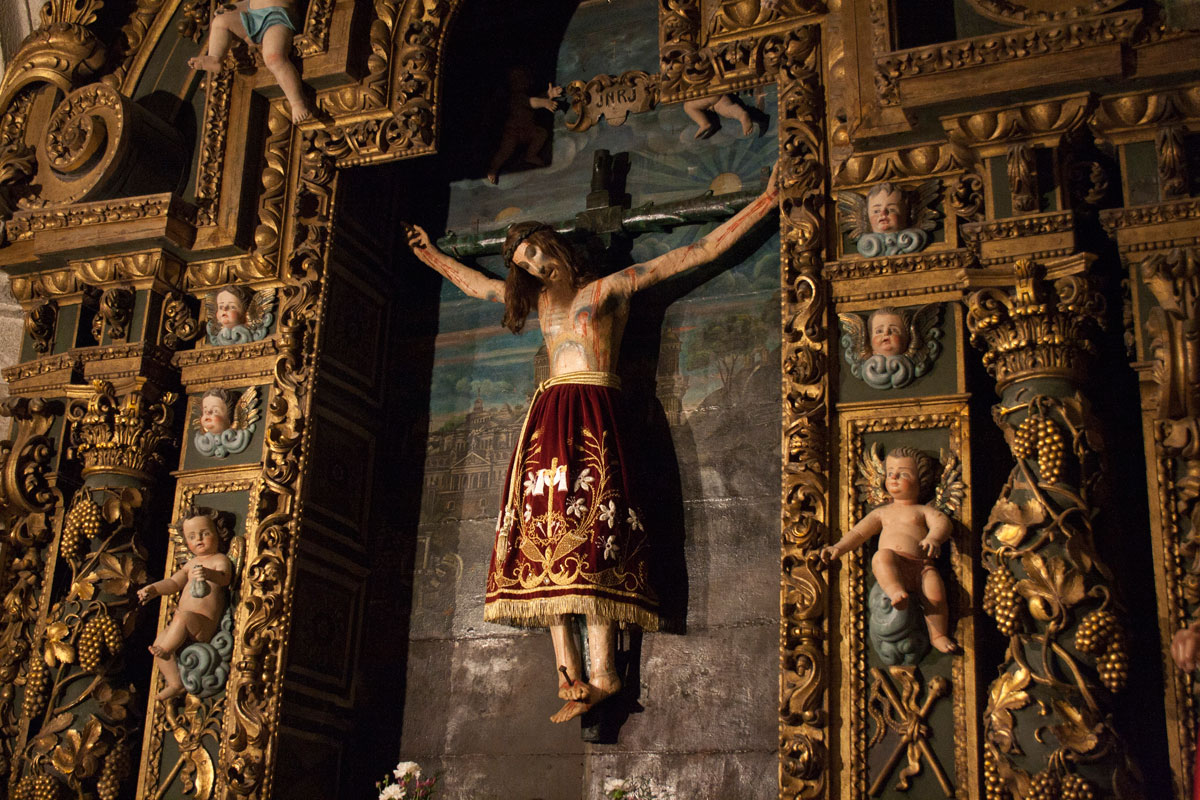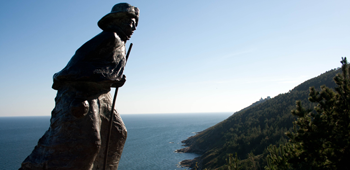Santa María das Areas Church
Santa María das Areas church is located in Facho´s Mountain area, the way to Fisterra´s lighthouse.
History
It’s origin is established in 1199 according to the gift brief from Mrs. Urraca Fernández, daughter of Traba´s Count, which reads as follows “V. modios de pane et tertian vacarum mearum de montealto. Ad opus ecclesie Ste. Marie de finibus terre”. Originally it had lounge ground plan, but time after, they were leanned several chapels and a vestry.
The legendary linking with Santiago´s Apostle and this land, made that Fisterra was visited for a lot of people as the end of the Way, to pray the Holy Christ. During the XIV, XV and XVI centuries Fisterra had a big number of pilgrims, so the village priest, Alonso García, decided to found a hospital, Nuestra Señora del Rosario Pilgrims´s Hospital in 1479. It was built in front of the church´s main facade.
Stands out in this temple it´s artistic riches, always influenced by the architectural trends applied in Santiago´s Cathedral, and by the Santiago´s Way influence, and without doubt by the high number of pilgrims who after visit the Apostle´s grave made their way to this land to pray Fisterra´s Holy Christ and to see the sea the first time in their lifes, for a lot of pilgrims.
This bells custody used in Corpus procession, were kept for fear of being looted by French ships during several years inside the church, because it could dissapeared for the french ships.
It was recovered in 1890, during improvement works.
Chapel and Image of Fisterra´s Holy Christ
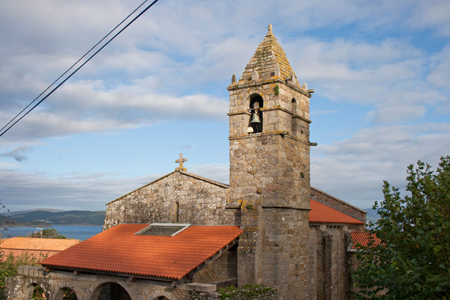
The chapel has a rectangular floor plan and baroque style. Some researcher workers attributed it´s authorship to Domingo A. de Andrade, he is one outstanding artist in Santiago´s Cathedral building, or maybe to Fray Gabriel de las Casas. Anyway, this construction started in 1965 to house the Fisterra´s Holy Christ altarpiece . The altarpiece is date in 1721, and it is a work of Miguel de Romay.
Tradition says that the Christ Gothic image (at the beginning of the XIV century) is a work of Nicodemus. The legend tells us that the image was transported by a ship, but sailors had to throw it into the sea in Cabanas area to calm the storm and continue the journey. Among the most famous miracles of Fisterra´s Christ the conversion of some Moors who wanted to desecrate it stands out.
Similar images exist in Burgos and Ourense. Ourense´s Christ image was a present of Fisterra´s bishop called Vasco Pérez Mariño.
High Chapel
This chapel from the mid XIV century, it is part of the original design of the church complex along whith the Central Area. They formed a whole before the incorporation of the remaining chapels. Many parts of the XII century are preserved.
The baroque tabernacle, the window in the wall of Romanesque origin and the magnificent image of Nosa Señora das Areas Virgin, a Renaissance work from the first half of the XVI century, stand out.
Until the beginning of this century there was a baroque style main altarpiece made by Francisco Antas in 1640. Unfortunately it has been lost and only drawings are preserved.
Probably part of the imagery that is preserved today was housed in this main altarpiece with Santiago´s Pilgrim in the central area.
Purísima Virgin´s Chapel and Carmen´s Chapel
It has the name of Nuestra Señora de la Quinta Angustia y San Miguel. It was founded by Roy Estévez and Alberta González in 1496. It has Ghotic Borgoñano style, and we can access this chapel by a pointed arch that has as a stand out characteristic, it´s crosspieced vault.
The Chapel of Nuestra Señora del Carmen under the dedication of Nuestra Señora del Rosario, which gave name to this chapel during several years, was founded by María Blanca, widow of the merchant Fernando de Mallo in 1524. With Plateresque style, it is a representation of the first artistic repercussions in Galicia of the new cloister of the Compostela´s cathedral. The archiepiscopal vault and shield are repeated. The altarpiece was decorated with the shield of the Carmelite order. It was donated by Mateo Pérez Valdivieso in 1741.
Central Area, Baptistry and the Holy Door
The central area dates from the beginning of the XV century, with its Ghotic arches and semi-columns.
Santiago´s Pilgrim image from the XVII century, stands out.
The baptistry received the name of Santa Lucía´s chapel and it´s the elderest chapels leaned in the central area during centuries. Probably it was founded between 1225 and 1250.
The Holy Door is a transverse door, one of the few examples in Galicia with Egas style,it is decorated in the outside with acanthiform motives, and it´s flanked by two shields: Feijoo and Recamán. This Holy Door is the temple entance during the Holy Year events.

 Galego
Galego  Español
Español 
